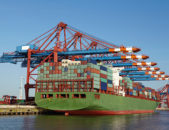It’s not every day a renowned design critic reviews industrial design, let alone a subject as specialized as Dangerous Goods floor signs. But Stewart D. O. North is no ordinary critic. “Floor signs are the most visible line of defense in promoting workplace safety,” he said. “Some people seek the writing on the wall, some…
9 things you might not know about jerricans and pails
Maybe you’re one of the hundreds of people who buy our jerricans and pails. After all, they’re indispensable for all kinds of liquid transport and storage purposes. But for all the times you’ve filled, emptied, shipped and stored jerricans and pails, we bet you’ve never stopped to ponder them. Well, we have, and we’ve…
Chemical company manager adopts hazmat spill kits for his family and home.
Your mother told you there was no use crying over spilled milk. But your mother probably didn’t manage shipping for a chemical company. “I hate spills,” says Dave, a shipping manager at a Midwestern chemical company who asked that his last name and employer not be revealed. “I do everything I can to prevent them,…
If hazmat labels could talk: An exclusive interview
Dangerous Goods is not a Pixar movie. Hazmat labels don’t talk. But if they did, they might have some interesting things to say about the role they play in shipping compliance: Q: Tell our readers about yourself. A: I’m a PVC-free, Class 9 Miscellaneous hazard class label from Labelmaster. Q: It sounds like you say…
That seals it! The 7 most famous, nonhazmat-related seals
Seals Series, Volume 6 — Over the last few weeks, we’ve taken a close look at the role of security seals in the Dangerous Goods business. From explaining why seals trump locks in hazmat security, to how seals protect less-than-load shipments, we’ve explained just about everything you need to know about seals. Everything serious, that is.…
What too many hazmat shippers forget about LTL shipment security
Seals Series, Volume 5 — Did you know that more shipments are moved on pallets and in crates than in full containers? It’s true—and, unfortunately, many of those less-than-load (LTL) Dangerous Goods shipments are not as secure as their shippers think. Some shippers feel that once the shipment has left their facility, they are no…
Why PVC belongs on your turntable, not your hazmat labels
Ask any music fan—vinyl is in a full-fledged comeback. Old records are emerging from basements and grandparents’ houses everywhere, and the pressed black polyvinyl chloride (PVC) disc is once again the hip way to buy new music. PVC was once the hip material for hazmat labels, too. But environmental and health concerns about PVC have…
Ultimate hazmat security: C-TPAT Compliant Seals
Seals Series, Volume 4 — A massive freighter docks overnight at a U.S. port. Its containers hold the kind of hazardous material that, in the wrong hands, could put countless American lives at risk. The next morning, the containers are offloaded to trucks and trains that take them to every corner of the country. A…
How a security seal control program protects your hazardous materials
Seals Series, Volume 3 — Seals are a great, underappreciated hazmat security tool. In our last couple of posts, we’ve talked about situations where seals are essential in Dangerous Goods security, and where seals are a better choice than locks. But seals by themselves can only do so much. To fully exploit their potential, you…
Dangerous Goods security: 5 reasons to choose a seal over a lock
Seals Series, Volume 2 — Since our high school locker days, most of us are conditioned to think that the best way to keep things secure is with a lock. In the Dangerous Goods world, though, locks aren’t always the best choice. When is a seal better than a lock? You might be surprised: …









